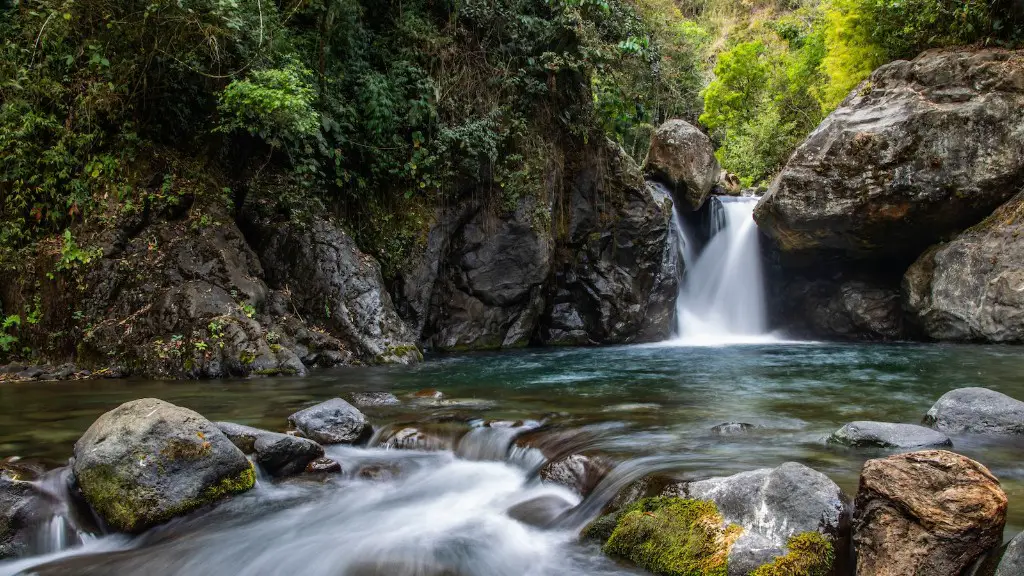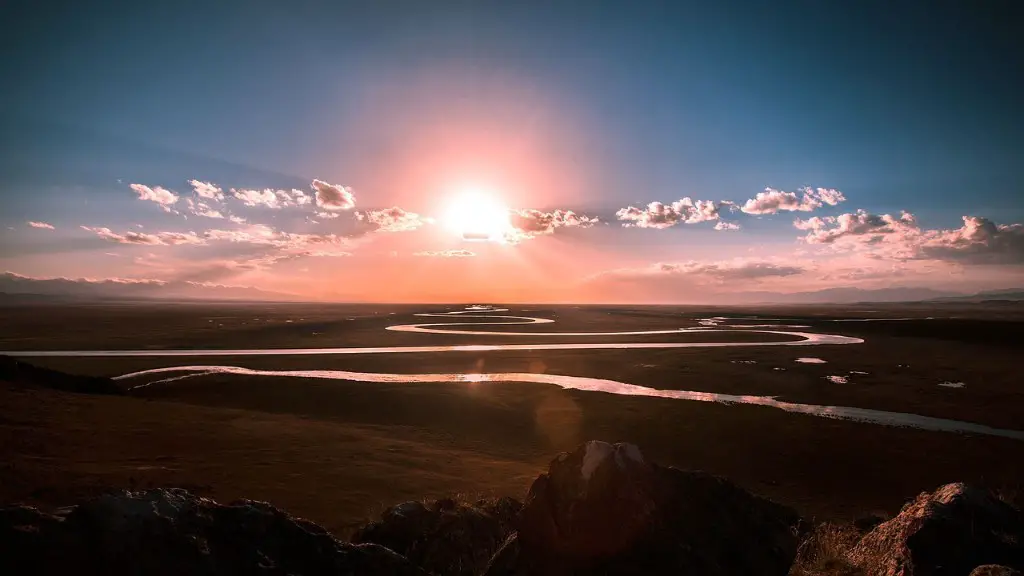The Ganges river is one of the most sacred and important rivers in India. It is also one of the most polluted rivers in the world. Every day, millions of people use the river for bathing, washing, and drinking. Unfortunately, this also means that millions of people are polluting the river with sewage and other waste. As a result, the Ganges river is vastly polluted and in need of cleaning.
The Ganges river is one of the most sacred rivers in India and is also one of the most polluted. Every day, millions of people bathe in the river and use it for drinking, cooking, and washing. Over time, this has led to a build-up of pollution in the river.
There are many ways to clean the Ganges river. One way is to build sewage treatment plants along the river so that the water that is used by people is cleaner before it enters the river. Another way is to create awareness about the importance of cleanliness and to encourage people to not pollute the river.
The government of India has also created the National Ganga River Basin Authority (NGRBA) to lead the way in cleaning up the Ganges river. The NGRBA has launched a number of initiatives to clean the river, including the construction of sewage treatment plants, the planting of trees along the river, and the cleaning of the river itself.
It will take time and effort to clean the Ganges river, but it is possible. By working together, we can make the river clean and make it a place that is safe for all to use.
How we can clean the Ganga river?
Namami Gange Programme is a flagship programme of the Government of India with the primary objective of cleaning, conserving and rejuvenating the river Ganga. The programme was launched on 8th July, 2014. The main pillars of the programme are treating sewerage infrastructure, achieving biodiversity, developing riverfronts, cleaning river surfaces, enabling afforestation, monitoring industrial effluents and increasing awareness among the public.
There is a belief among some people that locals have built up an immunity to the bacteria in the river, even if their mission is to clean it up. However, according to Sue Lennox, chief executive of OzGreen, this is a myth. People who bathe in the river can and do get ill from the bacteria present in the water.
Can Ganga ever be cleaned
The Ganges basin is being cleaned intensively which has resulted in improving the water quality to never-before standards. In a reel shared by ANI, the report claims that cleaning the Ganga river is becoming a success story. Take a look.
The high levels of oxygen in the Ganga River are due to the unique self-purifying attributes of the river. The high levels of oxygen give the river the ability to remain fresh over a prolonged period of time. This is one of the reasons why the Ganga is considered to be one of the most sacred rivers in the world.
How nasty is the Ganges River?
The Ganges is one of the most polluted waterways in the world due to the amount of sewage that is emptied into it every day. Only about half of the sewage is treated, which means that the river’s waters are very dirty. This is a major problem for the people who live along the river and rely on it for their water needs.
The river stinks because of the untreated sewage and effluents from the tanneries that flow into it. This is a serious problem because it not only pollutes the river, but also exposes people who use the river to the risk of contracting diseases. The tanneries need to be closed down to protect the health of those who use the river.
What happens if we bath in Ganga?
Every day, thousands of people flock to the river to take a dip, unaware of the health hazards it poses.
A new study has found that bathing in the river can expose people to high levels of faecal coliform bacteria, which can cause diarrhoea, dysentery, cholera and other diseases.
The study was conducted by the Indian Institute of Technology, Kanpur, and published in the journal Science of the Total Environment.
The researchers sampled water from different points along the river and found that the levels of faecal coliform bacteria increased from upstream to downstream.
They attributed this to the discharge of untreated sewage and industrial effluents into the river.
The study highlights the need for better sanitation and treatment of sewage and industrial effluents before they are released into the river.
The water quality of river Ganga is not fit for drinking purpose but is fit for bathing purpose, according to a water quality analysis report submitted by the State Pollution Control Board. The matter was taken up on Thursday.
Do people drink from the Ganges river
The Ganges river is one of the most important rivers in India. It is a vital water source for hundreds of millions of people, who rely on it for drinking, bathing and irrigating their land. The river is also considered sacred by many Hindus, who consider it to be a holy river that can cleanse them of their sins. The river is however, under threat from pollution and over-use, and its future is uncertain.
The dargah of Hazrat Nizamuddin Auliya is one of the most popular Sufi shrines in India. Situated in the Nizamuddin West area of Delhi, the shrine attract devotees from all across the country. Most of the Muslim devotees visiting this dargah also earn spiritual merit by bathing in the waters of the holy river Ganga flowing in the Ganga Canal In the nearby city of Haridwar on the banks of the Ganga different aspects of the Sanatan Dharm are practised with the Ganga river playing a major role.
How much will it cost to clean Ganga?
The National Mission for Clean Ganga (NMCG) is a flagship programme of the Government of India (GoI) with the objective of restoring the ecological integrity of the Ganga. The mission is being implemented by the National Ganga River Basin Authority (NGRBA).
The actual releases by Government of India to NMCG from the Financial Year 2020-21 to Financial Year 2021-22 (up to 31st January, 2022), is Rs 2,25000 crores. This includes the Central government’s share of Rs 1,500 crore and the state governments’ share of Rs 750 crore. The GoI has also released an additional Rs 500 crore for the NMCG’s activities in the current financial year.
The NMCG has been working on various fronts to clean the river Ganga. Some of the major activities undertaken by the mission include construction of sewage treatment plants, setting up of effluent treatment plants, solid waste management, river surface cleaning, afforestation, creating public awareness and community participation.
The scientific reason is that water of river Ganga is naturally having bacteriophages, which do not allow bacterial growth.So the water of Ganga is bacteri-free.
Which is the dirtiest river in India
The Yamuna is one of the most polluted rivers in the world. It flows through the metropolis of New Delhi and is full of trash and industrial waste. The water is not safe to drink and the river is a health hazard.
There are six species of river sharks found in the world, out of which the Ganges shark (Glyphis gangeticus) is endemic to India. It inhabits the River Hooghly in West Bengal, as well as the rivers Ganges, Brahmaputra, Mahanadi in the states of Bihar, Assam and Orissa.
Are there alligators in the Ganges river?
The river here is home to crocodiles and Gangetic dolphins, but numbers are not known Though crocodiles are spotted in the river occasionally, it is arguably for the first time that one ventured into a human habitat, Tiwary said Currents of the Ganga, which is in spate now, could have pushed the crocodile out.
This is good news for the future of our waterways, as it means that they will be able to continue to provide the same benefits to society even as the glaciers disappear.
Should you swim in the Ganges
These waters are not safe for anyone to swim in, regardless of their nationality. The pollution levels in the Ganges are far higher than what is considered safe, and many doctors do not recommend anyone entering the water. If you must swim in these waters, be sure to take all necessary precautions to protect yourself from the pollution.
The world’s top 12 most polluted rivers are:
1. Ganges River
2. Citarum River
3. Yellow River
4. Sarno River
5. Buriganga River
6. Marilao River
7. Mississippi River
8. Jordan River
9. Amur River
10. Meaning River
11. Tarim River
12. River Indus
Final Words
The Ganges River is considered one of the most sacred rivers in Hinduism and is therefore very important to the religious community. Despite this, the river is incredibly polluted, largely due to the human waste that is dumped into it. There are many organizations and individuals working to clean up the river, but the task is monumental.
One way to help clean up the Ganges River is to support organizations that are working on the issue. There are many Non-Governmental Organizations (NGOs) working to raise awareness about the pollution and to lobby for better government policies to protect the river. You can also volunteer with these organizations to help with their efforts.
Another way to help clean the Ganges River is to change your own habits and to encourage others to do the same. This means not dumping any waste, including sewage, into the river. It also means not littering and disposing of trash properly. If everyone does their part to keep the river clean, it will make a big difference.
It is evident that the Ganges River is in dire need of cleaning. The government and local organizations have put forth many initiatives to clean the river, but more needs to be done. We can all help by doing our part to reduce pollution and by supporting organizations that are working to clean the river.





